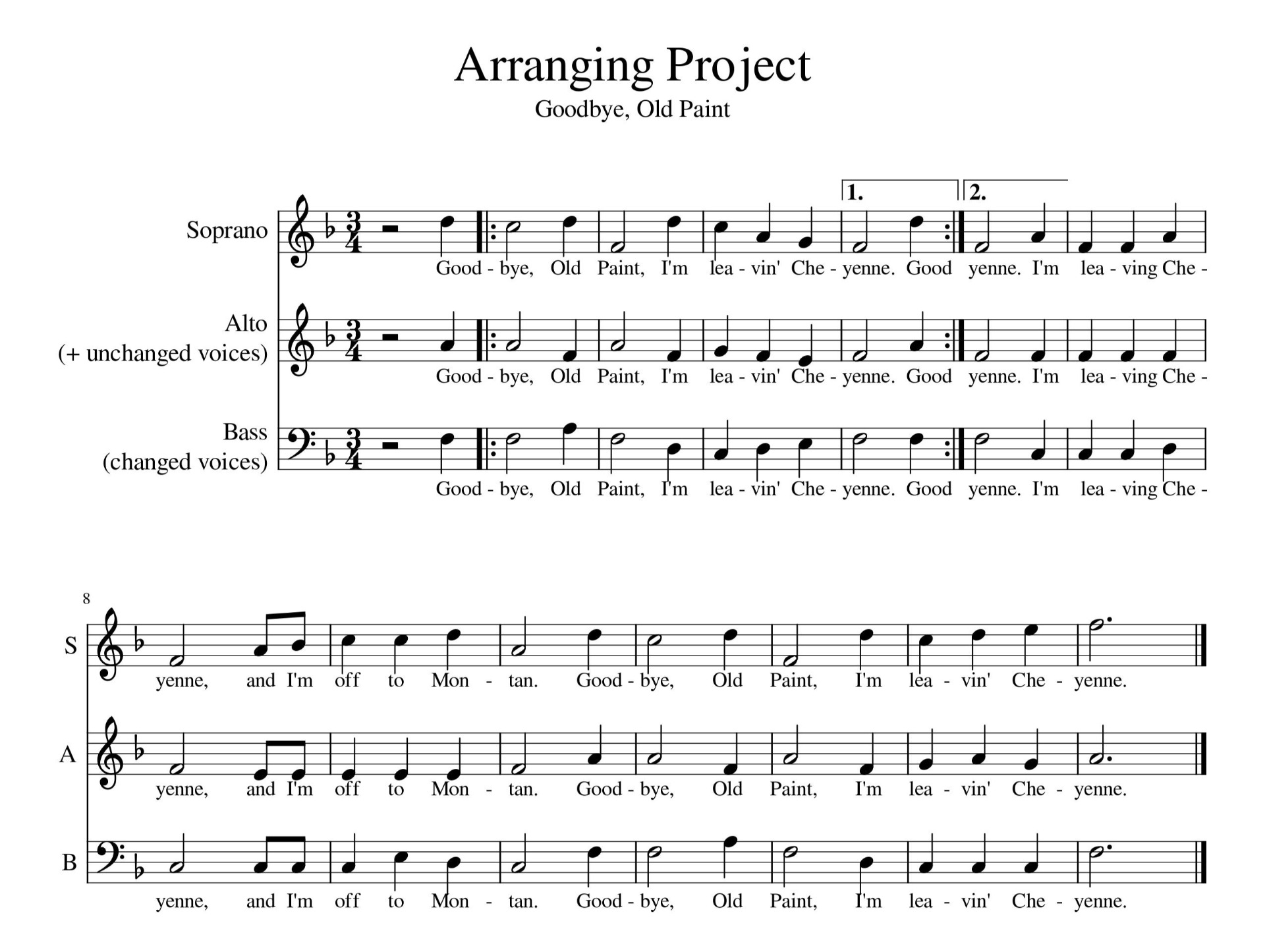Primary & Secondary
Choral Methods & Literature
MUS 382A & MUS 482A
About the Courses
These courses examined the instructional techniques specific to primary & secondary choral rehearsals. We considered how best to select appropriate vocal music repertoire & delved into the many organizational procedures necessary for effective teaching. Along with investigating several contemporary music methodologies, we had multiple opportunities to experience teaching & conducting. On this page, you will find a video & lesson plan for one of my Peer Teaching Episodes as well as a reflection on how that session went, my Mind Map brainstorming active learning strategies for teaching a piece, & my Arranging Project.
Peer Teaching: Video, Lesson Plan, & Reflection
Video
Lesson Plan
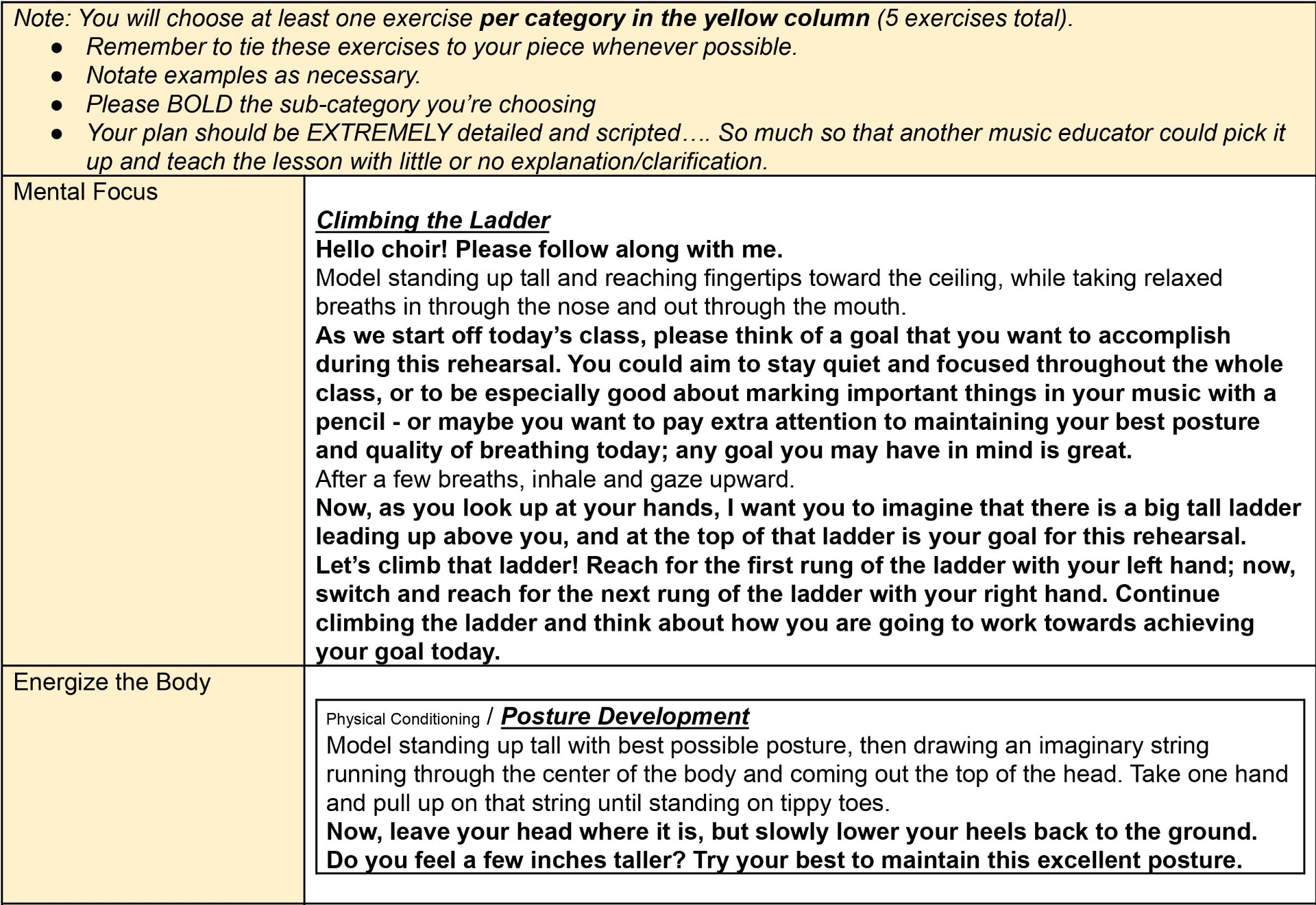
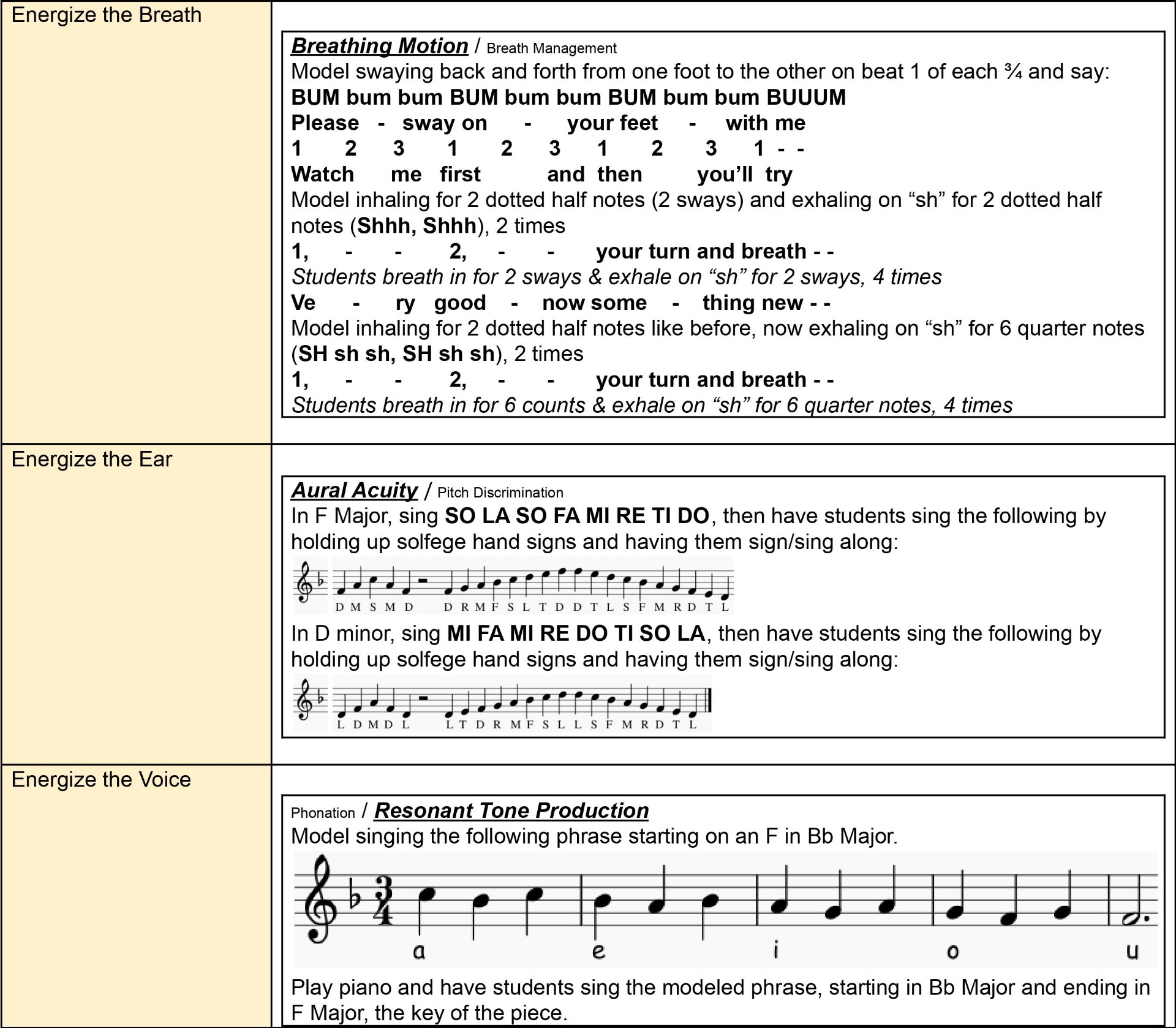
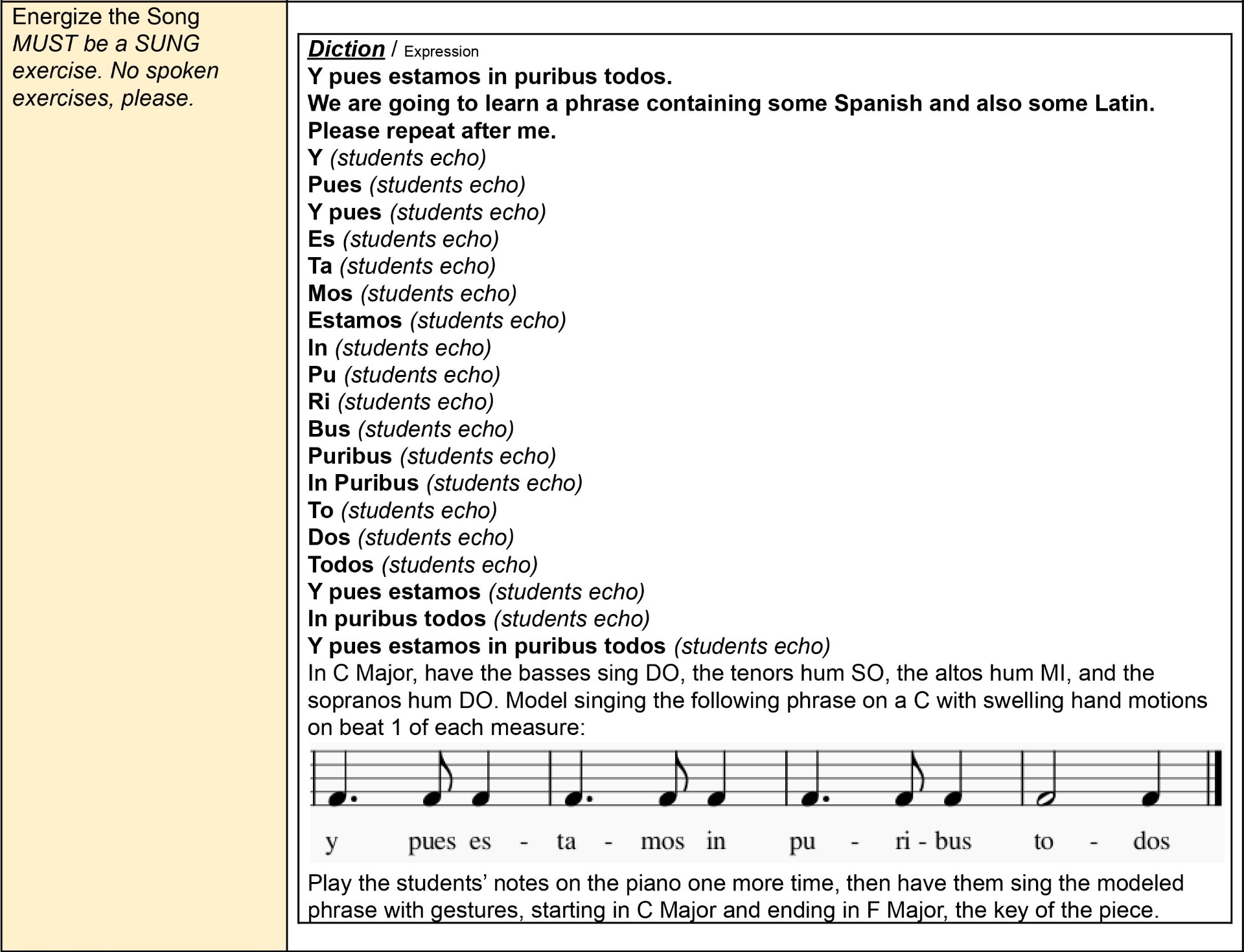
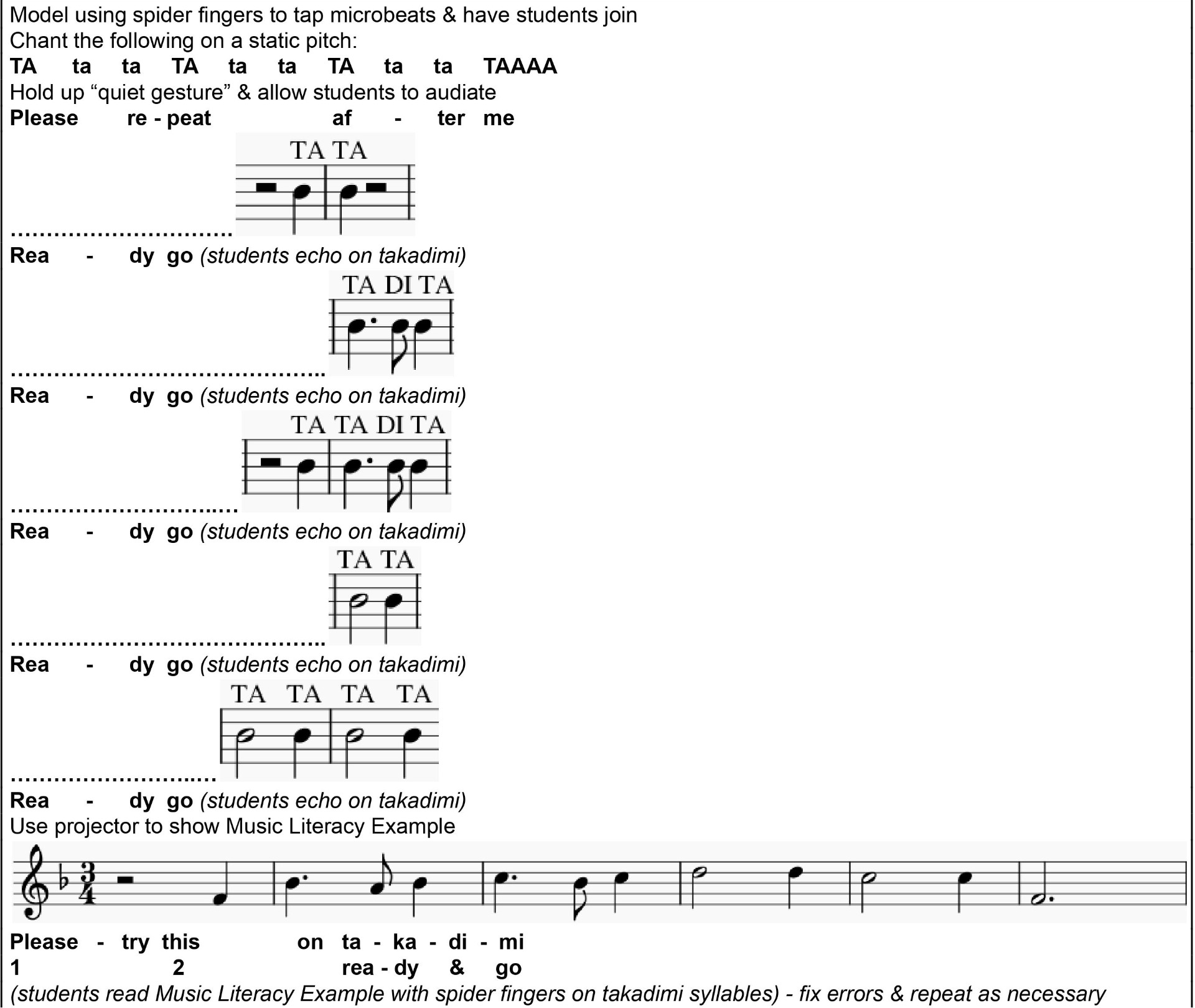
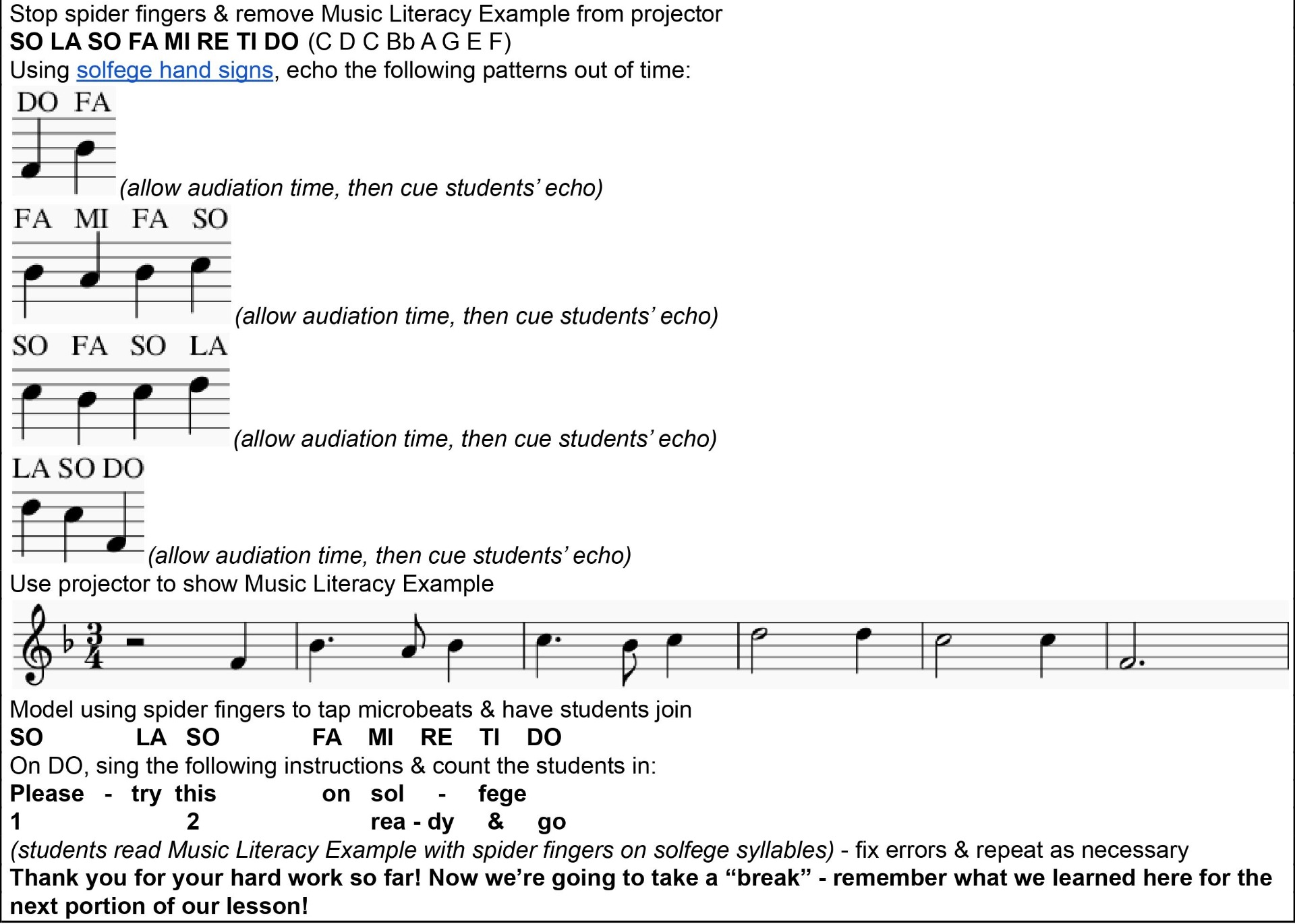
Reflection
I think this was my best in-class teaching episode so far! Practicing all the components of this lesson format throughout the 382A & 482A courses has helped me feel more prepared to implement the methodologies I have been learning about in real-time. From the helpful feedback of my peers in class and from reflecting on my video, I have learned a lot about what I can work on as well as what I should keep doing.
As far as what went well, I was happy with the overall design of my lesson. I spent a lot of time in the planning phase; and after turning the "final" lesson plan in, I even changed a few more things while I was practicing it. I felt successful in my fine-tuning of this lesson plan to make it effective, and I think that it achieved my intentions. Throughout the lesson, I generally had fast transitions that did not involve talking or introducing the next thing; I tried to plan any instructions to be given in rhythmic or tonal context in order to avoid excessive speaking. I also improved in the clarity of my cueing, which was something I was unhappy with last semester. During the rhythm pattern section, the students did not have any trouble knowing when to echo after me, and throughout the lesson I coordinated cueing while playing piano at the same time (which took a lot of practice!). Because I was more comfortable overall with my own responsibilities in the lesson, I was able to more intently listen and give immediate feedback. I made corrections to vowel purity and text stress during the warmups, and during the sight reading example I was able to isolate and improve the spot they were having trouble with. I also made a couple corrections to myself, such as when I remembered after the second tonal pattern to start singing them in on pitch, or when I corrected the starting pitch I was singing when isolating the tricky spot in the sight reading.
In this teaching episode, I noticed a few moments that could have gone better. When I did the posture building warmup exercise where the students followed me in drawing a string through their body and pulling up on the "string," I turned to the side to show them from a clearer angle, but they got confused and also turned to their sides in a way where they couldn't see me anymore, which was because I had told them to follow along with me. This was actually something I decided to do the morning of the lesson. I hadn't considered what I would be wearing when I planned the lesson, and that day I realized my long skirt might hide my feet and make it hard for the students to see from my modeling that I was up on my tippy toes. So, I opted to turn to the side view so that they could hopefully see my heels coming up off the ground; since this caused them to turn away when I didn't want that, I had to do some speaking where I didn't intend to, to get them to turn back to the front. It wasn't a big deal, but it was a good lesson for me because I was reminded firsthand of the fact that the students will do what the teacher models. Later on in the warmup, I wish I had provided a translation for the text I taught them; I contemplated this during the planning stage, but decided to leave it out when I thought I was cutting it way too close on timing. At the end of the lesson when the students read the music literacy sight reading example for the first time, I took the tempo way faster than I should've. I had "SLOW!" written really big on my lesson plan, but somehow by that point in the lesson I had sped up to a tempo faster than I intended. Luckily, I corrected this and had them try it slower after that, which was much more successful. However, when I did that, I had them stop the spider fingers altogether and then restart them at a slower tempo; when I watched the video, I realized I could've transitioned more seamlessly if I had just kept the spider fingers going and done a ritardando into the desired slower tempo.
After analyzing my video, I am excited to tackle my list of what to improve on going forward. When teaching, I will remember to consider exactly how I am modeling, keeping in mind that the students will really do as I model. I will also take an extra second to remind myself of the tempo and sound I want before counting the students in. Other than that, the primary aspect of my teaching I plan to work on is eliminating the percussiveness throughout everything I do and striving for a more legato approach, which is generally how I want the students to sing. After the teaching episode in class, I learned that my hand signs and conducting both had a percussive element to them which was not accurately indicating the sound I wanted. In watching the video I could definitely see how true this is, and I also noticed that my piano playing is percussive as well. As was pointed out in class, this overall percussiveness is definitely a habit from my band/instrumental background. I had been playing some pretty intense piano music recently, but now I'm learning Debussy's Suite bergamasque, so I will work on channeling my inner "Clair de lune" when playing vocal warmups so that my students hear from the piano the smooth legato sound I want from them. I will be especially focusing on improving my legato gestures so that I can become more comfortable conducting in a manner that is more appropriate and clear for cultivating an ideal choral sound.
Mind Map
By design, the Mind Map project helped me to really enhance the depth of my score study. In taking the time to think critically about each aspect of the score which needed to be analyzed, I meticulously added to each branch of my map & brainstormed active teaching strategies for the concepts listed. This is important, because planning a multitude of ways for students to actively participate in the lesson through many different modalities (aural, visual, kinesthetic) assures that all kinds of learners can reach success. Click here to check out my Mind Map for "Atención, que para hacer" by Tomás Torrejón y Velasco.
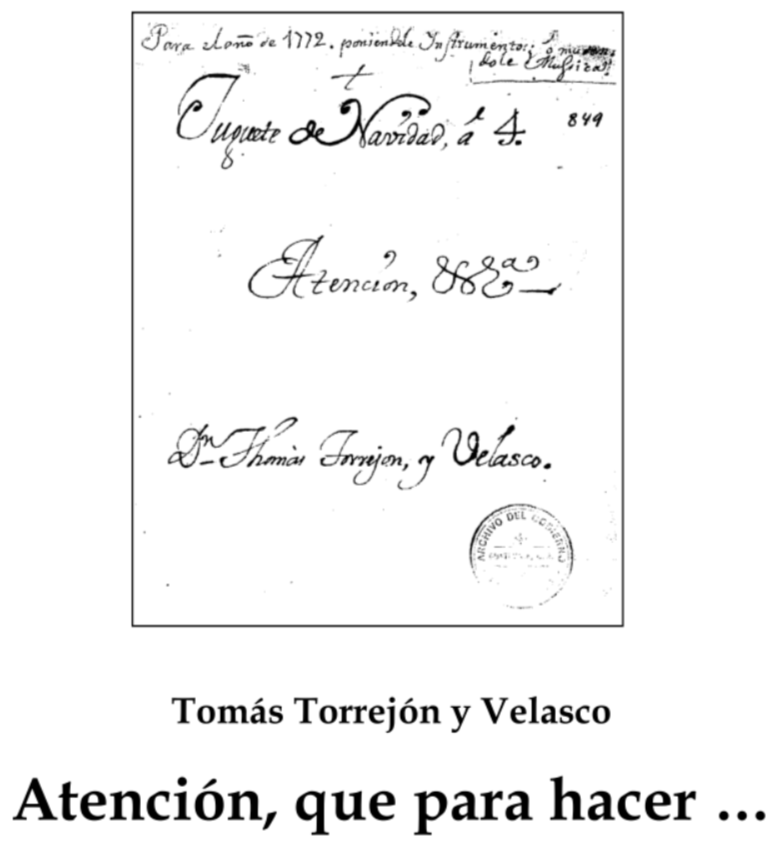
Arranging Project
Specifically for middle school, one challenge of teaching choir is adapting to changing voices & ensuring that students have access to parts that lie within their achievable vocal ranges. This means that middle school choir directors must have some arranging skills, in order to provide vocal parts suitable for the ranges of their students' changing voices. The Arranging Project was a chance to create a choral octavo of a folk song specifically encompassing middle school vocal ranges. Take a look at "Goodbye, Old Paint," below!
